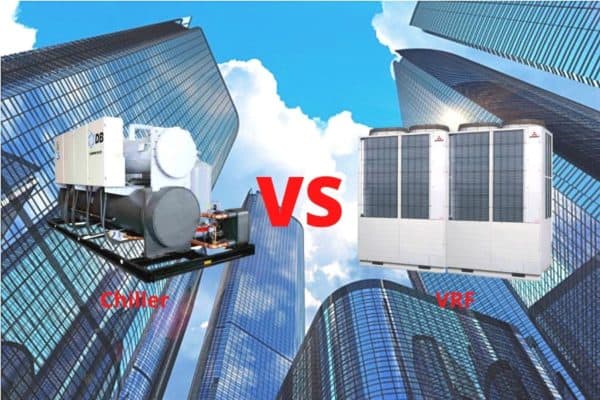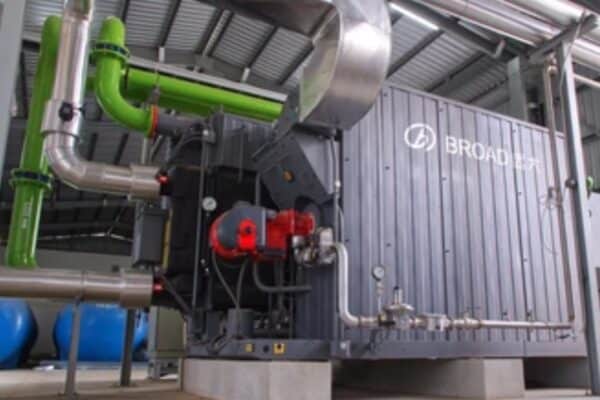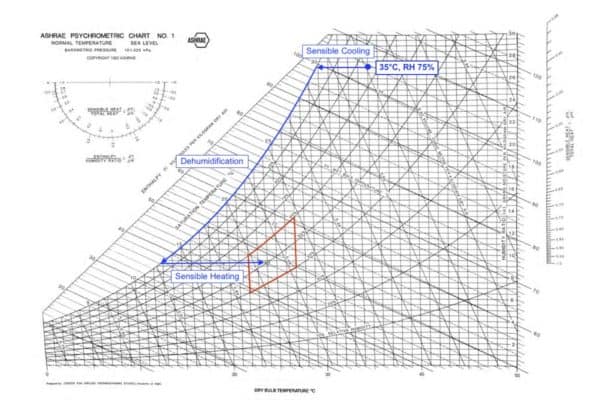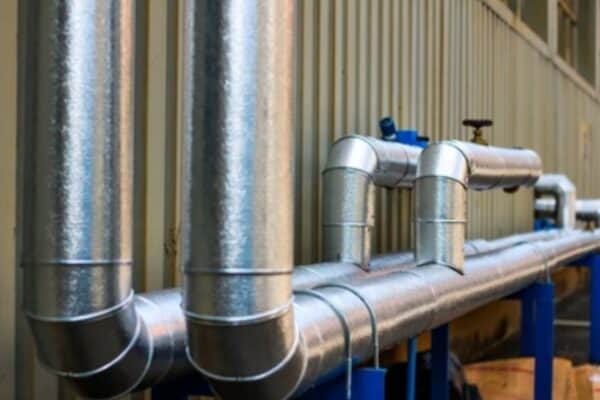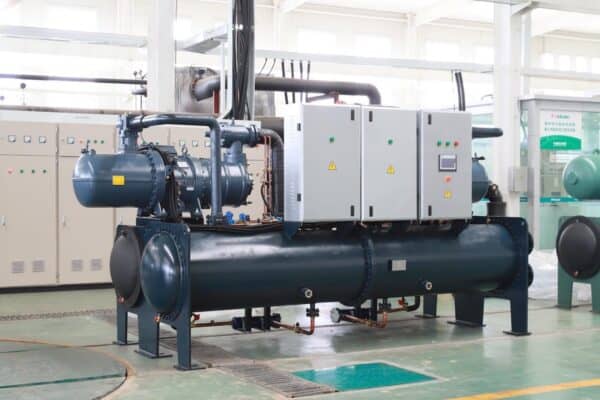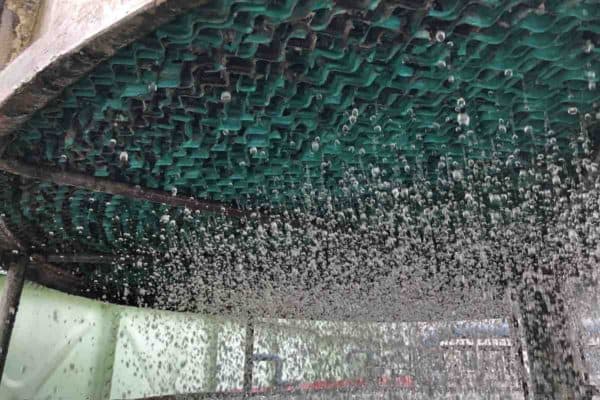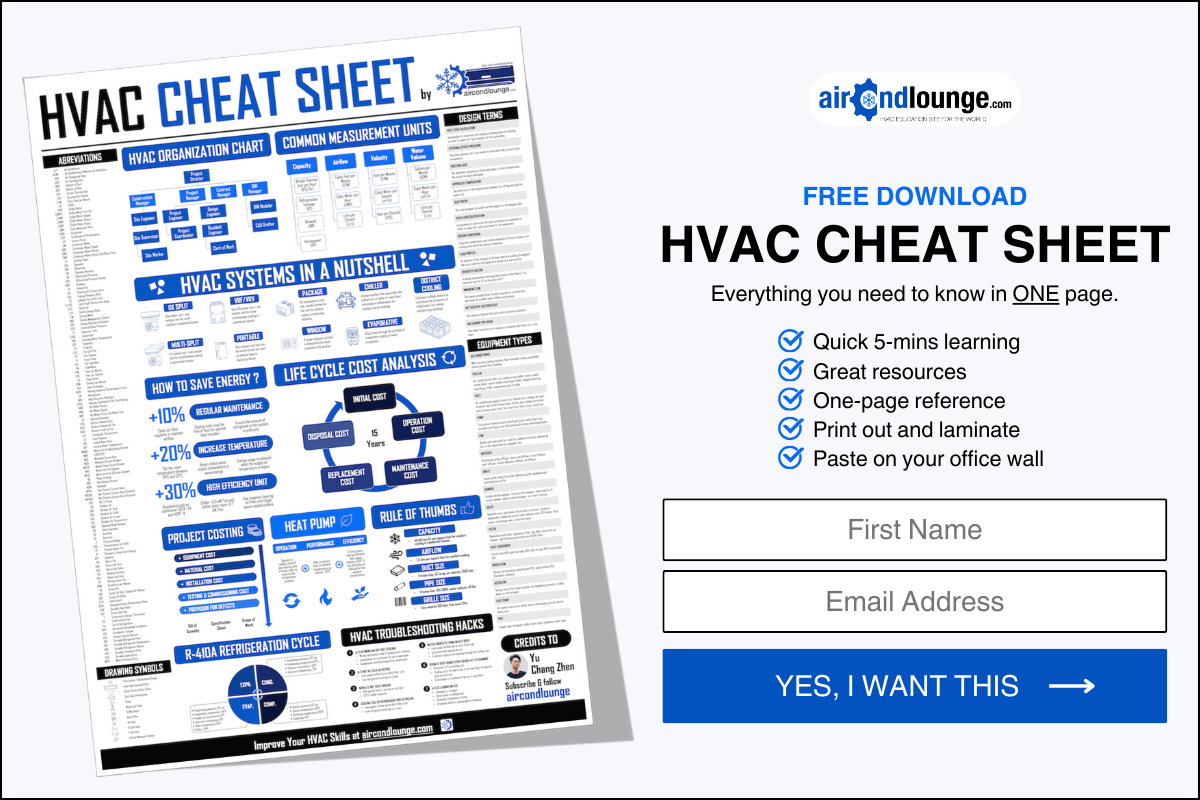District Cooling Thermal Energy Storage Explained
Thermal energy storage tanks are often found in district cooling systems. They are usually made of concrete and their physical size is big. So, how does it work in district cooling and what exactly is thermal energy storage?
In district cooling, thermal energy storage tanks are used to store cooling energy at night where the electricity is cheaper. During the day, the stored cooling energy is released. By doing so, the operating cost of the district cooling plant is reduced.
Some people misunderstood that a district cooling system with thermal energy storage has a higher efficiency but it is only partially correct. Understanding the working principle behind the system will unveil the truth.
How Thermal Energy Storage System Works?
Thermal energy storage system is also simply known as TES tank (thermal energy storage tank). Most people working in the industry prefer to call it TES tank. As for district cooling, they simply called it DCS (district cooling system) or DCP (district cooling plant).
TES tanks are usually made of concrete. They can be constructed in either round or square/rectangular shapes. TES tanks must be greatly insulated because they are storing energy over many hours.
Inside the TES tanks are hundreds, if not thousands of glycol balls (click to view examples). These glycol balls have can store a large amount of cooling energy.

During the day, large centrifugal chillers supply chilled water to buildings just like standard chilled water systems. However, at night, these chillers will operate at their best efficiency (part-load) to supply chilled water to TES tanks.

The chilled water will absorb the heat energy from the glycol balls, causing the glycol to phase change from liquid to solid ice. Because of phase change, each glycol ball stores a great amount of energy.

On the next day, the system circulates water into the TES tanks thereby directly using TES tanks to supply chilled water to buildings instead of operating the chillers.

The system is configured such that sufficient cooling power is always provided to buildings. In the event, if the TES tanks are incapable of handling the cooling demand, chillers will go online to support the cooling.
TES tanks supply chilled water through additional TES pumps, apart from the standard chilled water pumps and condenser water pumps.
Usually, the chilled water that “charges” the TES tanks is running at 4°C which is about 1-2°C below the standard chilled water supply temperature. As for the chilled water return temperature, it is about 13-14°C which is the same as the high delta T chilled water system.
During TES tanks discharge, the system will also ensure that the chilled water maintains the same supply temperature as the chilled water produced by the chillers.
On a side note, if you want to quickly learn about chilled water system, you can get my Chilled Water System (eBook). If you’re into design, you can enroll in my Chilled Water System Design Course where I teach you various design procedures with tons of examples.
Chilled Water System Design Course
Learn how to design a chilled water system with AHU/FCU selection, chiller sizing, cooling tower sizing, pump sizing, piping design, ductwork design and more.
What is District Cooling?
In case you are wondering, district cooling is a centralized chilled water system that consists of multiple large capacity centrifugal chillers located inside a district cooling plant that supplies chilled water to several associated commercial buildings through underground pipes.
Everything inside the DCP or district cooling plant is huge. DCP chillers can be as large as 2500 RT each with cooling towers at 3000 HRT each. Because of the large capacity requirement, these chillers are mostly centrifugal type. Scroll and screw chillers are not available in such a large capacity.
Apart from DCP, the second element in district cooling is the underground piping network. Chilled water is produced by chillers at DCP and supplied through a network of underground pipes. These underground pipes can be as big as 1100mm.
At the destination (inside the building), the chilled water circulates through one or more high efficient heat exchangers where it absorbs the heat energy from the chilled water circulating inside the building. Then, the “warm” chilled water travels back to the DCP and the cycle repeats.
As for the building, you can view the heat exchanger as the chiller. It supplies chilled water to air-side equipment such as AHUs and FCUs. Usually, the DCP owner bills the building owner by chilled water flow rate.
Why Use Thermal Energy Storage System?
By using TES tanks, DCP owners reduce operating costs and increase profit. TES tanks get charged by chillers using the cheaper electricity rate at night. Then, they discharge during the day so that their chillers don’t have to operate using the more expensive electricity rate.
For a building with a cooling demand of 4000 RT, a conventional district cooling system is nearly 25% more expensive to operate than a TES district cooling system. That translates to savings of about 1 million ringgit Malaysia per year.
Even though additional TES tanks are more costly to build, the ROI (return on investment) is merely 3 years which is considered a pretty good return. However, TES tanks do occupy a substantial land area.
Does Thermal Energy Storage System Save Energy?
District cooling systems with thermal energy storage save money rather than energy. In fact, it loses more energy than conventional chilled water systems.
Generally, a centralized chilled water system (district cooling) is more energy-efficient than an individual chilled water system because it utilizes large capacity chillers which is often more efficient.
However, with additional TES tanks, the energy efficiency of the chiller plant does not increase but the operating cost can be greatly reduced by playing around with off-peak electricity tariff.
Final Thought
When I was working with TES district cooling systems, I thought they are cool because everything is so big. They are sort of like a “serious business” to many DCS equipment suppliers. However, if you think about it, it is not really that good from an environmental perspective.
TES tanks required a large land area to construct and concrete is not really an environmental-friendly material, not to mention glycol balls. Unless a DCS is extremely large in scale such that it affects the power grid stability, most people will not choose to build it with TES tanks.
Once again, you can get my Chilled Water System (eBook) to quickly learn more about chilled water system. But, if you want to learn how to design a chilled water system from start to end, I encourage you check out my Chilled Water System Design Course.
Chilled Water System Design Course
Learn how to design a chilled water system with AHU/FCU selection, chiller sizing, cooling tower sizing, pump sizing, piping design, ductwork design and more.
If you have anything to add (or ask) about this topic, leave a comment down below!



